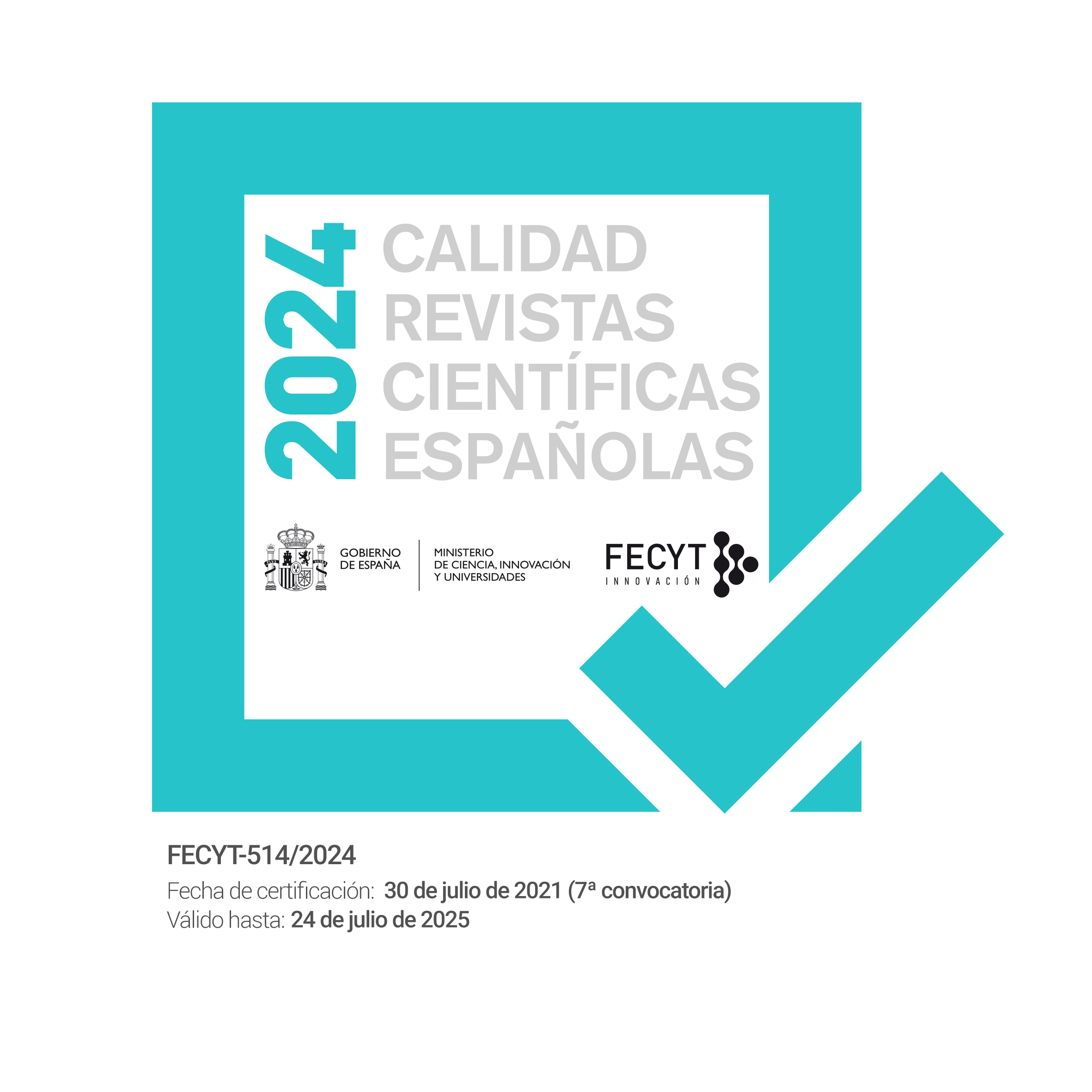‘GOTTA LIGHT?’: INTERROGATING AMERICAN DARKNESS IN EPISODE 8 OF TWIN PEAKS: THE RETURN THROUGH FORMALISM
DOI:
https://doi.org/10.12795/REN.2024.i28.11Keywords:
Visual analysis, darkness in storytelling, America,, formalist studies, Twin Peaks: The Return, media studies, Bruce BlockAbstract
This article examines how darkness is visually depicted in American storytelling within the eighth episode, “Gotta Light?” of Twin Peaks: The Return (2017). To explore the visual storytelling in this episode, I apply the lens of Bruce Block’s The Visual Story (2020), a formalist framework for visual media, to identify specific visual structures in key sequences. The components of Block’s methodology—line, shape, space, and tone—critically explore how visual elements construct thematic depth, portraying darkness as a complex, narrative-rich element of the American psyche. The article provides examples of film scholarship that explore darkness in the context of both America and Twin Peaks, underscoring the narrative significance of darkness as a thematic constant. Block’s framework not only reveals “Gotta Light?” as a seminal televisual reflection on American sociocultural issues but also demonstrates the accessibility and applicability of a contemporary formalist framework in media studies.
Downloads
References
WORKS CITED IN FIGURES:
Figures 1, 2, 4, 5, 6, 7: LYNCH, D. and Frost, M. (2017) ‘“Gotta Light”’, Twin Peaks: The Return [television]. USA. Showtime.
Figure 3: HARVEY, H. (1962) Carnival of Souls [film]. USA: Harcourt Productions.
Figure 8: HITCHCOCK, A. (1960) Psycho [film]. USA: Alfred J. Hitchcock Productions.
Figure 9: WYETH, A. (1942) ‘Winter Fields’ [painting], Whitney Museum of American Art. Available at: https://whitney.org/collection/works/3362.
ANDERSON, D.L. “‘There is No Return’: Twin Peaks and the Horror of Pleasure” in V. McCollum, editor, Make America Hate Again: Trump-Era Horror and the Politics of Fear. Routledge, 2019, pp. 177–178.
ANDREWS, D. “Art Cinema as Institution, Redux: Art Houses, Film Festivals, and Film Studies,” in Theorizing Art Cinemas: Foreign, Cult, Avant-Garde, and Beyond. University of Texas Press, 2014, pp. 184–190.
ARCHER, J. “The Resilience of Myth: The Politics of the American Dream,” Traditional Dwellings and Settlements Review, 25(2), 2014, pp. 7–21. doi:https://www.jstor.org/stable/24347714.
“BOB” (no date) Twin Peaks Wiki. Available at: https://twinpeaks.fandom.com/wiki/BOB,
BLOCK, B. The Visual Story. New York: Routledge, 2020
BORDWELL, D., Thompson, K. and Smith, J. Film Art: An Introduction. McGraw Hill, 2020.
BORTNIAK, A. and Ocheretna, O. “The ways of binary opposition realization of light/dark conceptual metaphors in a literary text,” Lviv Philological Journal, (9), 2021, pp. 36–43. doi:10.32447/2663-340x-2021-9.5.
BROSKI, R. (2012) Abraham Lincoln lives!, Abraham Lincoln presenter, Abraham Lincoln Lives Home. Available at: http://www.abrahamlincolnlives.com/.
CALDWELL, J.T. “Televisual Economy: Recessionary Aesthetics,” in Televisuality, 1994, p. 299.
CASTELLI, S. “The Text Devouring the Dead: Edgar Allan Poe and David Lynch’s American Gothic,” in Death is Served. transcript Verlag (American Culture Studies), 2023, pp. 23–57.
FORCEVILLE, C. and Renckens, T. “The ‘Good is Light and Bad is Dark’ Metaphor in Feature Films,” Metaphor and the Social World, 3(2), 2013, pp. 160–179. doi:10.1075/msw.3.2.03for.
FOWLER, M. Twin Peaks: The Return Review, IGN, 2017. Available at: https://www.ign.com/articles/2017/09/11/twin-peaks-the-return-review.
FRADLEY, M. and RILEY, J.A. ‘“I don’t understand how this keeps happening . . . over and over again’: Trumpism, Uncanny Repetition, and Twin Peaks: The Return,” in V. McCollum (ed.) Make America Hate Again: Trump-Era Horror and the Politics of Fear. New York: Routledge, 2019 pp. 197–198.
FRANKE, D. “Nostalgia and the Kiss of Ulysses in Twin Peaks,” James Joyce and the Arts, 2020, pp. 135–147. doi:10.1163/9789004426191_012.
FROST, M. in The Secret History of Twin Peaks. Flatiron Books, 2016, p. 328.
HAMPTON, H. “David Lynch’s Secret History of The United States,” Film Comment, 29(3), 1993, pp. 38-41, 47–49.
HAZELTON, J. Behind the scenes of the “Twin Peaks” return: “David Lynch saw it as a feature film, not as a TV series,” Screen 2018. Available at: https://www.screendaily.com/features/behind-the-scenes-of-the-twin-peaks-return-david-lynch-saw-it-as-a-feature-film-not-as-a-tv-series/5130270.article
HILLARD, T.J. ‘“Deep into that Darkness Peering’: An Essay on Gothic Nature,” Interdisciplinary Studies in Literature and Environment, 16(4), 2009, pp. 685–695. doi:10.1093/isle/isp090.
HUDDLESTON, T. Twin Peaks: The Return Episodes 7 & 8 Recap – The Extremes of Experience, British Film Institute: Sight & Sound, 2017. Available at: https://www2.bfi.org.uk/news-opinion/sight-sound-magazine/reviews-recommendations/tv/twin-peaks-return-episodes-7-8-recap.
JOSEPH, R.G. “Lincoln the Woodsman: Native Americans and Obscene Patriarchs in Frost and Lynch’s Twin Peaks,” Quarterly Review of Film and Video, 41(3), 2022 pp. 339–367. doi:10.1080/10509208.2022.2124096.
KAPURCH, K. and SMITH, J.M. “A Fear So Real: Film Noir’s Fallen Man in Bruce Springsteen’s Darkness on the Edge of Town and the David Lynch Oeuvre,” Interdisciplinary Literary Studies, 21(1), 2019, pp. 89–108. doi:10.5325/intelitestud.21.1.0089.
LEWIS, R.W.B. The American Adam. University of Chicago Press, 1955.
MA, A. “Now It’s Dark,” Film Comment, 53(6), 2017, pp. 36–39. doi:https://www.jstor.org/stable/45134320.
MARCUS, G “Picturing America,” The Threepenny Review, 107, 2006, pp. 27–31.
MCGOWAN, T. “Lost on Mulholland Drive: Navigating David Lynch’s Panegyric to Hollywood,” Cinema Journal, 43(2), 2004, pp. 67–89. doi:10.1353/cj.2004.0008.
MELLEN, J. “Spiraling Downward: America in Days of Heaven, In the Valley of Elah, and No Country for Old Men,” Film Quarterly, 61(3), 2008, pp. 24–31. doi:10.1525/fq.2008.61.3.24.
METZ, W. “The Atomic Gambit of Twin Peaks: The Return,” Film Criticism, 2017, 41(3). doi:10.3998/fc.13761232.0041.324.
NEALE, S. “Art Cinema as Institution,” Screen, 22(1), 1981, pp. 11–40. doi:10.1093/screen/22.1.11.
NIESSEN, N. “American Dreams ft. David Lynch,” Cultural Critique, 99 (Spring), 2018, pp. 31–64. doi:10.5749/culturalcritique.99.2018.0031.
NOCHIMSON, M.P. ‘“The Magician Longs to See” - Twin Peaks,” in The Passion of David Lynch: Wild at Heart in Hollywood. University of Texas Press, 1997, p. 88.
THOMPSON, K. “The Strange Cases of David Lynch,” in Storytelling in Film and Television. Harvard University Press, 2003, pp. 106–142.
THOMPSON, Robert J. Television’s Second Golden Age: From Hill Street Blues to ER. Syracuse University Press, 1997.
THOMPSON, Robert J “Quality Goes Quirky: Twin Peaks, Northern Expose, and Picket Fences,” in Television’s Second Golden Age: From Hill Street Blues to ER. Syracuse University Press, 1997, pp. 149–177.
UHLICH, K. “Twin Peaks, Episode 8 Recap: Did You Like that Song?, MUBI, 2017. Available at: https://mubi.com/en/notebook/posts/twin-peaks-episode-8-recap-did-you-like-that-song.
WATTS, C. “Conrad’s “Heart of Darkness”: A Critical and Contextual Discussion,” The Modern Language Review, 75(4), 1980, p. 866. doi:10.2307/3726621.
ŽIŽEK, S. The Art of the Ridiculous Sublime: On David Lynch’s Lost Highway. Seattle: Walter Chapin Simpson Center for the Humanities, University of Washington, 2002.















